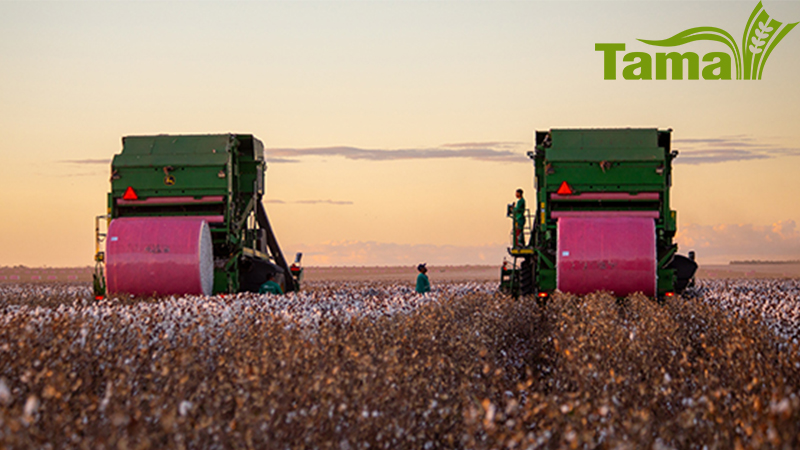The Fabric Of Your Lives
If you’ve been following the exploits of our associate editor Drew Harris as he gets deep into planting a half-acre of cotton on a plot of his father’s land in eastern Tennessee, you’re probably enjoying – and relating to – all of the challenges with machinery and weather he’s faced in these early weeks of the season. I guess I shouldn’t be too surprised, but he’s taken on the project with the same kind of restlessness and tenacity that you’d expect from a grower whose livelihood depends on the season’s outcome.
I’ve been doing a little of my own exploration into the life of the Delta cotton grower myself, except I’m doing it in the confines of our big leather chair in the living room. Dick Meister, the 88-year old namesake of our parent company, handed me an advance printing of a book scheduled for release next month called “High Cotton: Four Seasons in the Mississippi Delta.” He suggested I give it a read and let him know what I thought.
Author Gerard Helferich tells the story of Zack Killebrew, a Tchula, MS grower, as he follows him through an entire cotton season. The book covers a lot of waterfront in a season that featured a lot to cover. It’s part agronomy and geology lesson, part sociological study, part indepth human study, and part history lesson. And it takes place in 2005, a season which included hurricanes Katrina and Rita, adding plenty of drama to the equation.
Killebrew’s story of farming life is a genuine depiction of life on the Delta making cotton. He’s an intense character that seems to have much in his life, but is possessed with an uneasiness about the crop, the land, the weather, and the hired help that keeps him walking on an emotional razor’s edge. He’s a man acutely aware that one bad season or one wrong decision could put him out of farming forever.
The book does an excellent job dissecting the season agronomically, from the strategic and emotional selection of seed to tilling and planting methods to defoliation and the awful affects of bad weather just prior to harvest. In general, the explanations are simple enough for the layman to understand without oversimplifying.
There’s also plenty of detail on the business end of cotton farming – crop marketing, a costly but necessary replant, the ginning process – anyone interested in an understandable portrayal of the the cotton farmer’s business will find it here.
“High Cotton” also provides some interesting historical background on the region, including the development of the Delta as a cotton growing region. Of course, the issue of slavery is explored – fortunately, his discussion takes a wider view than just the Delta, looking at the entire country’s role in establishing and perpetuating the practice.
To me, it feels like a very honest portrayal of a year in the life of a cotton grower. In fact, I wonder if it might be a little too honest to be enjoyed by cotton growers. Some of his struggles against the stress of weather and crop had me squirming in my chair and thanking the Lord above for my relatively cushy desk job, and made me wonder, if I were a cotton grower, would this be “recreational reading” for me?
But certainly, for anyone interested in a great story about this fascinating region and way of life, this is a terrific book to have. And as we work through this year of challenges, from the upcoming Farm Bill to the shifting global cotton markets, my hope is that this book isn’t seen 20 years from now as a definitive journal of a life long since past.
Editor’s Note: This book is available for advance purchace on www.amazon.com.









